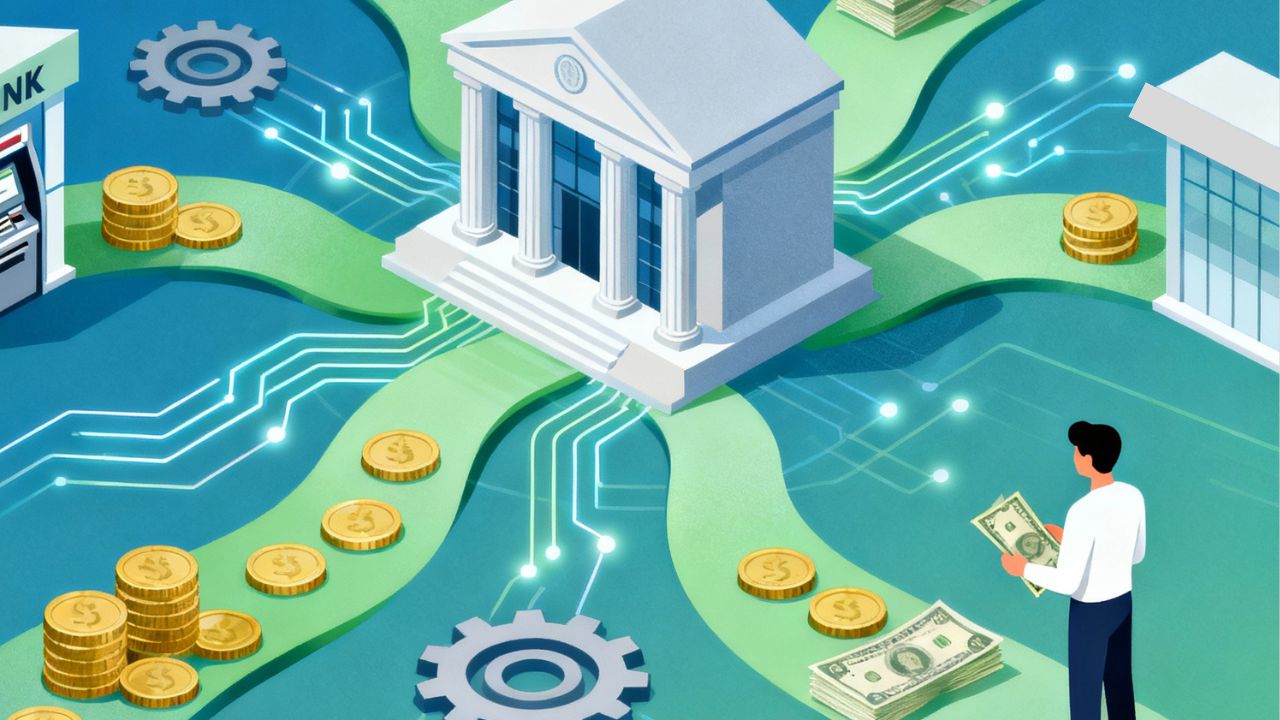Most people do not see what happens behind the scenes when money moves in an economy.
Central banks do more than issue currency. They also make sure banks have enough short-term cash to do their daily work. When the system faces a cash shortage the central bank can step in. This article explains how that works in simple words for readers who are not experts.
What is liquidity and Why it matters?
Liquidity means how easily cash moves in the financial system.
- High liquidity means banks can lend and businesses can borrow without trouble.
- Low liquidity means cash is hard to find.
When cash becomes scarce short-term interest rates can rise fast. Higher rates make borrowing expensive. That can slow down business activity. It can also cause worry in markets. If the problem grows it can stop lending and cause a wider financial problem.
The main tools central banks use
One common tool is a repo operation. In a repo the central bank lends cash to a bank for a short time. The bank gives government bonds or similar securities as collateral. After a short time the bank pays back the cash and gets its securities back. This is a temporary way to add cash to the banking system.
A related tool is called reverse repo. In a reverse repo the central bank takes cash out of the system. Banks lend cash to the central bank and earn a small return. Reverse repo helps manage excess cash and keeps short-term rates from falling too low.
Standing facilities are ready made windows the central bank can use every day. These are useful when banks face surprise shortages or when markets are volatile. Standing facilities make the response fast and predictable.
How the Process Works?
When banks need short-term cash they borrow in money markets. If many banks need cash at the same time the supply of cash falls. This shortage pushes up short-term borrowing costs. As borrowing gets expensive banks may stop lending to each other. They may also reduce lending to businesses and households. That is the start of a chain reaction that can slow economic activity.
To stop this chain the central bank injects liquidity. It does this through repo operations open market bond purchases swap auctions or standing repo facilities. When the central bank lends cash the supply of money in the system rises. More cash brings short-term rates down. Banks feel safer. They return to normal lending. Businesses get credit. Markets calm down. This is the simple causal path from a central bank action to a stable market.
Repo and Reverse Repo in simple terms
Repo means repurchase agreement. A bank sells a government bond to the central bank and agrees to buy it back soon. The central bank gives cash in return. This is like a short-term loan secured by the bond.
Reverse repo is the opposite. A bank gives cash to the central bank and receives a bond. The bank gets its cash back later with a small return. Reverse repo drains the extra cash from the market.
Both tools help to control short-term interest rates. When a central bank wants to ease stress it injects cash with repo operations. When it wants to cool down excessive cash it uses reverse repo.
Real examples from recent news
A recent example comes from the United States. The central bank there used its standing repo facility to add tens of billions of dollars of short term cash to the banking system during a period of heavy month end and market stress. This action helped lower short-term repo rates and gave banks the cash they needed to manage reserves. The move was temporary and meant to calm short-term funding pressures while the central bank watched how conditions evolved.
India also saw large liquidity measures. The country’s central bank announced a package of operations in early 2025 to add durable liquidity. These steps included buying government bonds running variable tenor repo operations and holding foreign exchange swap auctions. The goal was to ease a noticeable liquidity shortfall in the banking system. As a result banks had more rupee cash to meet daily needs and market functioning improved.
Also Read – Fed Interest Rates vs Gold Prices
Why these moves matter to ordinary people
These operations may sound technical but they affect everyone. When banks have enough short-term cash they continue to lend to businesses and households. That keeps jobs safe and helps companies invest and grow. Stable short-term interest rates mean loans and mortgages do not suddenly become much more expensive.
If central banks did not act a small cash shortage could become a larger problem. Banks might stop lending. Markets could become volatile. Businesses might delay investment and hiring. Consumers could face higher borrowing costs. By acting quickly central banks try to prevent these negative outcomes.
The limits and the balance central banks face
Central banks do not add cash without thinking. Too much liquidity for a long time can fuel inflation. That is why many of these operations are temporary. Central banks monitor markets and use other tools such as reserve requirements and policy rates to keep a balance. The aim is to provide enough short term cash to avoid a freeze while avoiding excess liquidity that would harm price stability.
Final thoughts
The basic idea is simple. Central banks watch the flow of cash in the financial system. When cash runs low they lend through repo or similar tools to restore balance. When there is too much cash they use reverse repo to remove it. These quiet actions keep the economy functioning and protect people from sudden shocks.
Understanding this process helps readers see why central banks act even when the news seems calm. These steps are not about changing long term policy in most cases. They are targeted actions to ensure that the system has what it needs to operate smoothly.
If you want I can make this article SEO friendly. I can also tailor it for social posts or a simple script for a short video.
This article is for informational purposes only and should not be considered financial advice. Investing in stocks, cryptocurrencies, or other assets involves risks, including the potential loss of principal. Always conduct your own research or consult a qualified financial advisor before making investment decisions. The author and publisher are not responsible for any financial losses incurred from actions based on this article. While efforts have been made to ensure accuracy, economic data and market conditions can change rapidly. The author and publisher do not guarantee the completeness or accuracy of the information and are not liable for any errors or omissions. Always verify data with primary sources before making decisions.

